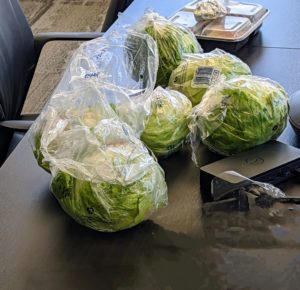Known for our commitment to solve urgent social problems, working as an analyst at Redstone Strategy Group (RSG) offers unique opportunities to make a positive change in the world. We often get asked what a typical day looks like for a Redstone analyst, so we asked three of our team members to share stories about their work.
The vignettes below give insight to the array of activities that make up any given day in the life of a Redstone analyst:
Engaging Clients
As key members of project teams working in small, collaborative units, analysts engage at all levels of project work, including research, internal brainstorming sessions, and client presentations and meetings.
After submitting a paper with recommendations to a community foundation on his first project at Redstone, San Francisco-based analyst Michael Chien was requested to join the client and Redstone Director Jason Blau for a unique opportunity. “The client called and requested we join her in person to talk through the memo to help her digest it all,” explains Michael.
Working together over two days, Michael, Jason, and the client helped turn the Redstone recommendations into functional work streams for the client’s staff. “I felt like a true thought partner,” comments Michael, “you don’t get that at a big firm.”
As Michael’s first project requiring client travel, the time together served as a great relationship building moment both for working with the client and with Jason.
Michael reflects, “My work felt very valued. It’s not just what you’re writing on paper.”
Analyzing Data
Of course, analysts spend a fair amount of their days diving deep into projects, conducting research, interviewing experts, and analyzing qualitative and quantitative data. Hand-in-hand with crunching data, Claire Dinshaw with Redstone’s San Francisco office notes, “we need to communicate the data we are learning and explain our findings. I spend lots of time on client emails and writing agendas.” New York-based Arushi Desai, also finds slide decks are important communication tools. “We need to tell an articulate story,” she explains, adding that, “there can be a lot of slide edits to get the storyline right.”
There is a reality to working with data, “it can be a grind,” Claire admits, “once you find the data sets, you need to clean them – some states have really messy data.” However, as Claire observes, “numbers are concrete – I love digging into research questions and answering them with solid qualitative and quantitative data.”
Developing Professionally
Part of an analyst’s day might include meeting with a senior member of the firm to discuss the analyst’s professional development. Mentoring and apprenticeship are a vital part of life at Redstone, with a clear career path trajectory and regular professional development reviews. Structured around an intensive apprenticeship model, all analysts are paired with a development lead (DL) at the firm to help guide and navigate their professional growth.
Arushi appreciates this approach. “My DL is an advocate for me. He regularly sets aside time to gather feedback from my project teams and then meets with me to discuss the intel and help align my work with my goals,” she explains.
“It’s a very positive format,” notes Arushi. “At my last review, Max (Associate Principal, Max Dovala), laid out what I was doing well, areas for growth, and feedback on my involvement with the firm. He asks lots of questions and gives me a lot of support, learning my project preferences and work style, and helping lay out a roadmap for my goals.”
“The DL shares their perspective on how to be the best asset for a project team and for Redstone Strategy Group. I appreciate this feedback and support,” comments Arushi, “it’s an investment in my growth.”
Shaping Firm Culture
All team members at Redstone, including analysts, help shape the firm and its culture. Analyst Claire explains that Redstone has two DEIJ (Diversity, Equity, Inclusion, and Justice) committees. As part of the internal DEIJ committee, Claire looks for opportunities to improve the culture within Redstone and how the firm addresses issues such as white supremacy culture and sexism. “Consulting is known to be very hierarchical,” explains Claire. “We continue to ask questions around power and how this intersects with race, sexual orientation, gender identities, disability, etc. We’re thinking about how this shows up at the firm and are working towards hosting workshops around power and hierarchy.”
With analysts working across varying teams, Claire points out that committee time provides good opportunities for analysts to cross-communicate with other Redstone analysts she doesn’t normally work with. “We put together workshops as well as microlearning sessions that we share during team lunches. Topics include subjects of racism, sexism, white supremacy, and ableism and disability. This gives us an opportunity to align language and norms at the firm,” she explains.

Office life in general is a daily component of an analyst’s day, along with project-based and firm-related work. Arushi remarks, “One of the most unique things at Redstone is people taking time to get to know their colleagues. It’s valuable to spend time fostering a connection.” Michael echoes this sentiment as well, commenting, “The junior camaraderie at Redstone is unmatched – it’s really exceptional. We have a great team of individuals who care about similar things and have a commitment to be good to each other and push each other when needed.”
To meet Redstone’s commitment to make a difference in the world by advancing social change, our team of intelligent, compassionate analysts are essential to our success. As we continue to grow, we recruit analysts seasonally. Recognizing the more inclusive we are, the better our work will be, we persist in building a team that represents a variety of backgrounds, perspectives, and skills. You can see the Careers page to learn more about being an analyst at Redstone.